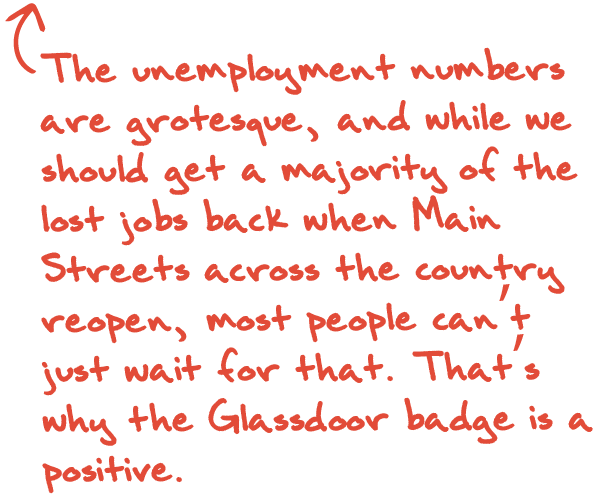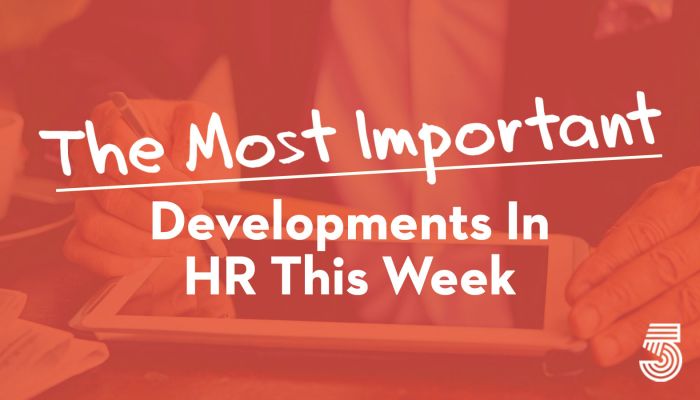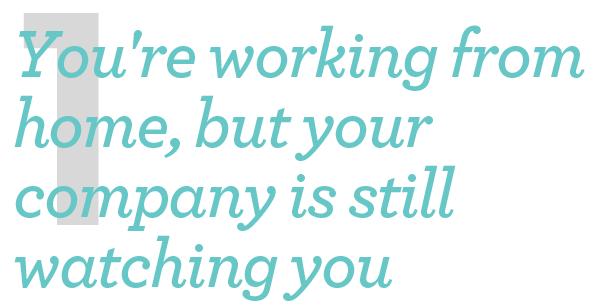
Now that millions are suddenly doing their jobs at home as a result of the coronavirus, more companies want to know how employees are spending their time. Some of them are relying on the same surveillance tools that have been used to monitor work in the office, and they don’t always disclose when the software is added to laptops remotely. The technology provides managers with daily productivity scores for remote workers or detailed reports on which tasks consume their days. Other tools are designed to catch employees who might be more tempted to download files from the company or violate security rules. Employers have wide legal latitude to use tracking tools, though the products can test employees’ threshold for privacy concerns. WSJ
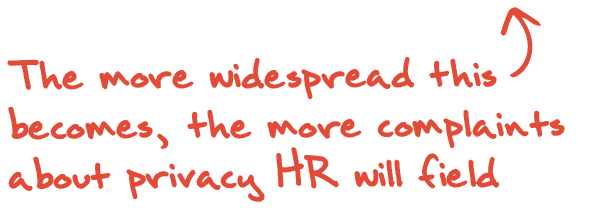

Twenty years ago, corporate risk managers had near-zero public visibility. Most were back-office staffers who focused on securing insurance for environmental and real estate problems (tornadoes, fires, earthquakes, facilities breaches). The pandemic has catapulted the field into prominence almost overnight. Boards are quickly creating risk committees focused on crisis planning and remote work data privacy — and they want a chief risk officer on speed dial. Chief risk officers need the analytical might to evaluate everything from supply chains to staffing; the ability to maintain many relationships (to law firms, insurance brokers, industry peers); the communication savvy to handle employees and media in a crisis; and financial literacy to understand not only a company’s balance sheet but also how much money would be lost if, say, the parts factory in Turkey closed for a week. Zach Finn, who directs the risk management and insurance program at Butler University in Indianapolis, is thrilled to see his profession emerge from the sidelines. “We’ll finally be respected for holding the world together,” he says. Bloomberg


As the coronavirus pandemic escalates and disruptions to business-as-usual continue, managers are grappling with the unknown. You don’t know when your employees will be able to return to the office or how different things will be when they do. Regardless, you need to be in constant communication with your team. What information — and how much of it — should you share with your reports about the health of your organization? How can you be candid about the possibility of pay cuts and layoffs without demoralizing your team? And, during this period of uncertainty, how can you offer assurance without giving people false hope? The COVID-19 pandemic is an unprecedented event in modern history. And yet, according to Paul Argenti, Professor of Corporate Communication at the Tuck School of Business at Dartmouth College, the experience of managing through it is not necessarily unique. Similar to other crises, such as 9/11 and the global financial downturn, workers feel scared and worried. “Uncertainty triggers fear,” he says. “People are freaking out and wondering, ‘What does this mean for my company, my job, and my future?’” Your role as a manager is to “project confidence and strength.” Even though the situation is fast-moving and you don’t have perfect information, you need to be honest about what you know, says Amy Edmondson, the Novartis Professor of Leadership and Management at Harvard Business School. “Task one is transparency,” she says. Explain to your team, “here’s what we do know, here’s what we don’t know, and this is what we are doing to close that gap.” Your second task is to “articulate a sense of possibility and hope.” Accomplishing both of these tasks, however, is no easy feat. HBR

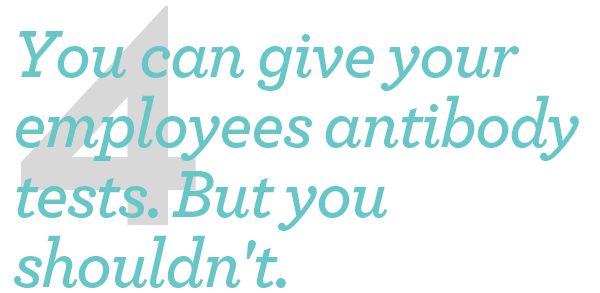
Just about everyone wants to see life get back to normal — whatever that means. But, how do you do it safely? Some businesses are talking about doing antibody testing for COVID-19 to determine if people are safe to return to work. Normally, medical tests (including taking workers’ temperatures) would be prohibited by law, but nothing is normal right now. The Americans with Disabilities Act allows only tests that are necessary and directly related to employment. One of those things that is directly related to employment is if an illness would cause a “direct threat” to others. And so that brings us to our current status. The Equal Employment Opportunity Commission (EEOC) said that coronavirus is a direct threat, therefore the typical no medical exam rules fly out the window. Employment Attorney Jon Hyman says that all boils down to an answer of “employers absolutely can require antibody testing as a condition for an employee to return to work.” But, saying you can do something is not the same as saying you should do something. We don’t know how reliable antibody tests are. Likewise, a “healthy” temperature doesn’t necessarily mean you’re not infected with COVID-19 (or anything else). Inc.
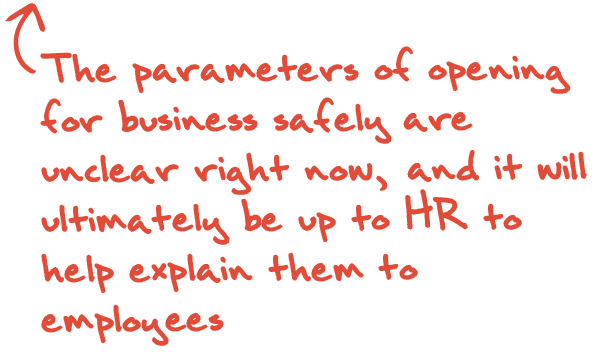
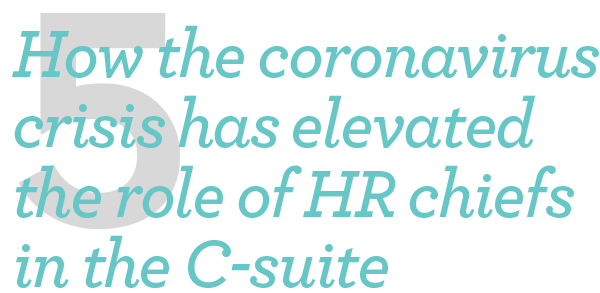
During this time of major upheaval and uncertainty, the CHRO is a loud voice in the coronavirus war room. These chief people officers are the ones having daily, if not hourly, conversations with the CEO and other senior leaders on how best to navigate a situation that no one possibly could have fathomed. They’re the ones helping to keep anxiety-ridden employees informed about what’s happening with the company and up to date on the resources — financial and medical — that can help them stay calm and productive. And as organizations begin the early discussions about when employees might be able to return to work, it’s the CHRO’s job to help create a blueprint for what that might look like. In short, they’re therapists, benefits counselors, and strategists. “In the earliest days, we thought [coronavirus] was strictly a health-care issue,” says Johnny C. Taylor Jr., CEO of the Society for Human Resource Management. “But it became clear how quickly it morphed into a people issue and how CHROs are playing a critical role in helping their companies get through this.” And while plenty of companies may have had disaster plans in place, nearly all of the CHROs we spoke to said nothing could have prepared them for the magnitude of this pandemic. Tamla Oates-Forney, CHRO of Waste Management, was the head of HR for GE Africa for five years and dealt with the Ebola crisis there. “The coronavirus is so much broader, is moving so much faster and is impacting so many more people,” she says. CNBC

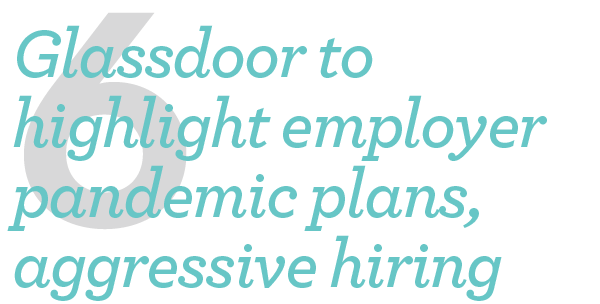
The pandemic has halted hiring for many employers, but it has also spurred innovation within the recruiting space. Glassdoor’s tools come as the latest shake up, joining a number of those born during the earlier days of the virus’ spread within the U.S. Glassdoor’s tools include a badge to mark postings that are a part of a hiring surge. Among the employers experiencing a surge are CVS and Walmart, both of which announced plans to hire tens of thousands to keep up with the demand created by COVID-19. To bring on 150,000 new associates, Walmart reduced its hiring process to “as little as 24 hours” to tackle time-to-hire, one of the most common issues in recruiting. CVS created a technology-enabled hiring process composed of virtual job fairs, virtual interviews and virtual job tryouts. Employers can highlight updates to their pandemic response plans on Glassdoor by marking them with “a special COVID-19 badge,” the job site announced April 21. The badge will signal to users that a post includes information about an employer’s benefits, work-from-home policies or learning and development opportunities, Glassdoor said. HR Dive
